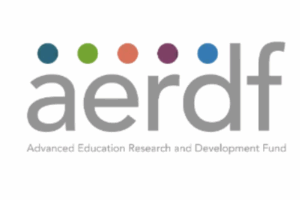Books, Courses & Certifications
What Will Medicaid Cuts Mean For School Health and Wellness Services?

Lately, Angela Reyes’ oldest daughter talks her ear off.
“Sometimes I’m like, ‘I need you to quiet down!’” Reyes laughed.
But when the now-12-year-old was a kindergartener, her speech was largely unintelligible. Reyes credited school-based speech therapy for her daughter’s progress and that of her three sons.
Reyes and her four children are among the nearly 80 million Americans covered by either Medicaid or the Children’s Health Insurance Plan (CHIP). All of her kids attend Chicago schools, receiving school-based therapeutic services reimbursed by Medicaid — the fourth-largest federal funding source for schools. Two of Reyes’ children have language disorders that affect their speech and make it difficult for them to learn to read.
“They have had issues with being able to speak and being able to form words correctly so that people understand them,” she said.
Over the last decade, schools have become health-care hubs for eligible students like Reyes’ children by providing needed physical and mental health and social services, so they can be in school and focused on learning.
But now that Congress has passed the Trump administration’s vast budget bill, which will reduce federal Medicaid spending by about $1 trillion and increase the number of uninsured Americans, Reyes worries what will happen to her children if those cuts reach schools.
District leaders expect school health services to be hit hard.
In a July media release, David R. Schuler, executive director of the school superintendents association, expressed concerns about the federal budget’s cost-shifting, which will foist more of the Medicaid funding burden onto states, resulting in “devastating downstream effects on public education funding” and “impossible tradeoffs — often at the expense of schools and the students they serve.”
District leaders named those tradeoffs in a survey about federal funding cuts by the advocacy group Healthy Schools Campaign. Most said that in addition to reductions in school health staff and services, entire district budgets will suffer.
Health Care in Schools
About half of U.S. children, roughly 38 million kids, are covered by either Medicaid or CHIP, with school-age kids comprising nearly one third of all Medicaid enrollees. Children are greater than six times more likely to access health care at school than anywhere else, making school the primary place where many kids receive health care.
“School can be a very powerful place for meeting students’ mental and behavioral health needs because [the children] are already in an environment where they’re comfortable,” said Jessie Mandle, national policy director for Healthy Schools Campaign.
Schools also make health care easier to access for families, she said. Pulling students from school for medical or counseling appointments isn’t ideal for students or parents, and in rural areas, medical offices are often an hour or two away.
In the last decade, more states have been making school-based health care available by opting in to Medicaid’s School Health Services program. Historically, under the Individuals with Disabilities in Education Act, Medicaid allowed school districts to bill for health services provided only to students with documented disabilities. But in 2014, the Centers for Medicare and Medicaid Services, the federal agency that administers Medicaid, expanded the school-based program to include services for all Medicaid-enrolled children.
Consequently, for many families, schools have become health- and social-services hubs. Students enrolled in Medicaid can get basic vision, dental and medical screenings, behavioral health screenings and services, mental health counseling, support for managing asthma and diabetes, and routine checkups.
Schools often are the first place some families learn about Medicaid and CHIP. Increased access to health care at school has helped to narrow health disparities and improve student attendance and academic success.
“We’ve seen both red and blue states taking up this opportunity to use Medicaid dollars to sustain and increase vital services for students,” Mandle said. “As an organization, we’re really concerned that that progress is at risk.”
Difficulties Ahead
What’s next for school-based health services since the budget passed is unclear, according to leaders from national organizations that represent school health clinicians. Although it will reduce federal Medicaid spending by 15 percent over the next decade, it doesn’t call for direct cuts to school Medicaid. Instead, it introduces new work requirement rules for adult Medicaid recipients and those with dependent children.
“It’s a behemoth bill,” Kelly Vaillancourt, director of advocacy and policy at the National Association of School Psychologists, said of the new budget. “A lot of school Medicaid experts are really still unpacking it.”
Even so, professional organizations have gleaned enough to fear the fallout on their members. Kate King, immediate past president at the National Association of School Nurses, predicted schools will have fewer school nurses, who are often the first or the only health-care provider students encounter at school. Research shows that a lower-student-to-nurse ratio relates to better student attendance.
Coupled with the loss of Medicaid coverage for many families, which can affect whether their children are insured, students and their families will be less healthy, King said.
“They’re not going to get preventive care. They’re not going to get initial chronic disease care, and they’re going to become sicker,” King said, “which will cost everybody a lot more money.”
State health agency officials agree that school health services will be weakened. A spokesperson for the Illinois Department of Healthcare and Family Services said, “Cuts to federal funding will lead to reduced services, as states cannot make up the funding gap…harming students in the process.” Centers for Medicare and Medicaid Services did not respond to requests for an interview.
Reyes is scrambling for solutions, such as trying to mimic speech therapy at home in case her children stop receiving it at school.
“I’m showing them how to move their mouth, in ways that a speech therapist would,” she said.
Benefits For Every Student
Schools use a variety of sources to pay for health services, including grants, private donations, and state and local education funding. The majority of funding for school health care comes from Medicaid and CHIP.
According to the Healthy Schools Campaign survey, district leaders use Medicaid funds in three ways:
- support salaries for school health staff
- provide increasingly in-demand in-person and telehealth mental and behavioral health care
- buy assistive technology and specialized equipment, which includes hearing aids, wheelchairs and text-to-speech devices that dictate writing for students with fine motor skills, and assistive listening devices that help students with hearing impairments or auditory processing disorders
“Medicaid and CHIP really have such a significant impact on the health and well-being of students,” Healthy Schools Campaign’s Mandle said. “[They provide] a wide variety of services to keep kids learning.”
Maredeth Teamer, a claims analyst for Illinois’ Oswego Community Unit School District 308, which serves 17,000 students, said that knowledge is power for district Medicaid coordinators, especially now that federal Medicaid to states will decrease.
The key to maximizing Medicaid reimbursement dollars, Teamer said, is for districts to get a solid understanding of Medicaid policy and the reimbursement process in general.
“Know your budget, your district, your families,” Teamer said. “We’re going to have to count every penny. We should be doing that anyway.”
Typically, schools bill Medicaid directly. State Medicaid offices reimburse schools for the cost of health services not covered by the disabilities in education act, administrative and outreach costs associated with Medicaid, and certain other costs above what reimbursements have covered.
Mandle said the reimbursement process can help schools optimize funding to meet the needs of all students, but it depends on the state — only half of them have followed through on Medicaid expansion — and on how well a district implements school Medicaid.
“When a district gets better at leveraging Medicaid, it frees up [unrestricted grants or education] funds to be used elsewhere,” Mandle said.
“Medicaid funding makes the overall pie better for the entire student population,” she said.
Uncertainty Sparks Concern
About 90 percent of district leaders believe federal Medicaid reductions will hurt entire district budgets, not just school health services, according to the Healthy Schools Campaign survey.
“What we heard is, ‘We’ll have to cut other [education] programs in order to meet [mandated services under the disabilities act] because we have less money.’ Or they’ll have to raise taxes,” Mandle said.
The survey concluded that tradeoffs like these, coupled with cuts to health services, will harm students and their academic performance and attendance, leading to increased strain on teachers and school staff to fill in support gaps.
“There’s going to be less support for students with mental, behavioral and physical health needs,” Mandle said.
King with the school nurses association agreed.
“We know that a school nurse in a school saves more than 90 minutes of time for administrators, teachers and clerical staff in doing that care. [Those staff] have other work to do.”
Families will suffer as well, both Mandle and King say. Because schools are the primary source of health care for so many families, those who lose Medicaid eligibility because of the tightened work requirement rules under the new budget act are likely to experience financial strain as they try to shoulder the burden of accessing and paying for medical care.
“It’s harder to get and keep jobs for the Medicaid population than people think,” King said. “Those jobs [often] are manual labor or service jobs. [If Medicaid recipients] don’t have health care, if they don’t have sick days … if you miss three days, you’re sometimes just gone. You don’t have a job anymore.”
Teamer, the Oswego claims analyst, is most concerned about the immediate effects of the work requirements on parents’ access to disability diagnoses for their children, most of which come from non-school-based health-care providers.
“If families don’t have health care, they’re not getting [referrals for IEPs] anymore.”
King also sees longer-term negative consequences for families, especially those who already face financial insecurity.
“If their Medicaid is cut, they will be sicker,” King said. “If they are sicker and they can’t get their medicine, they will be buying medicine, maybe, instead of food. It’ll be harder to pay their rent. They will have less [capacity] to help their children.
“People don’t see that whole picture.”
Angela Reyes worries about the tradeoffs that she might face. But her concerns go beyond her own children.
“I think that [the budget act] is going to deepen de-facto segregation. Black and Brown kids are the ones that have the hardest time getting onto IEPs and getting Medicaid help, and they are also the ones that are oftentimes first to be cut,” she said.
Books, Courses & Certifications
In a System That Wasn’t Built for Me, My Students Help Me Stay

Academia is a high-stress, high-surveillance environment. Faculty are asked to do more with less: more students, more reporting, more unpaid labor — and less time, less support, and less say in decisions that shape our work. For many of us, the job has become a constant negotiation between our values and institutional priorities.
And yet, I stay. Not for the salary. Not for the endless meetings or initiatives that depend on faculty labor but often move forward without our input. I stay because of my students. They are the reason I continue to show up.
At the California State University where I teach, my students come from a wide range of racial, cultural and economic backgrounds. Many are the first in their families to attend college. Few have had Black professors before. And I am one of very few Black faculty on campus.
It can be isolating. I attend meetings where no one else looks like me. I navigate policies that were not built with people like me in mind. Even well-intentioned efforts to foster belonging often feel top-down or disconnected from the everyday realities of teaching, mentoring and being visible.
But my students — across all backgrounds — support me in ways they may not even realize. It’s in the way they show up, engage with material, trust me with their stories, or quietly ask, “How are you doing?” They remind me: when Black professors are in the classroom, everyone benefits.
They understand that representation is about more than role models for Black students. It expands perspectives, deepens classroom trust, and allows for more honest, critical dialogue. Our presence in the academy challenges the status quo and makes space for voices that are too often ignored.
They are not my formal support system, but they are my community.
In a profession where recognition is rare and burnout is high, a thank-you note, a hallway chat, or a class conversation that sparks something real can carry me through weeks of feeling invisible in faculty spaces. My students remind me that this work — when stripped of the bureaucracy — still matters.
To be sure, students should never be expected to carry the emotional weight of supporting their professors. That is not their role. The gratitude I feel does not excuse the broader shortcomings of higher education. It simply underscores how powerful our relationships can be in the face of institutional neglect.
But universities must do more than celebrate diversity on their brochures. If they truly care about faculty success — especially for faculty of color — they need to listen to students. Students see us more than any task force or strategic plan. They witness our labor and our care firsthand.
Institutions should partner with students to co-create strategies for retaining faculty of color. That means going beyond traditional evaluations to foster real conversations about campus climate, mentorship and visibility. It means funding student-led efforts that recognize and uplift faculty who teach and build community — the very labor that fuels student success but often goes unrewarded.
Universities should also rethink what support looks like outside of formal structures. Sometimes what faculty need is not another committee, but a space to gather, breathe and feel seen. Student organizations often model this well. They create spaces that are joyful, inclusive and rooted in mutual care. Faculty can benefit from those spaces too — not as authority figures, but as participants in a shared community.
Creating sustainable change in higher education doesn’t require reinventing the wheel. It requires valuing the relationships already happening on campuses every day. When students trust their professors, when faculty show up with care, when conversations extend beyond grades and the syllabus — those are the moments that build true community.
Academia doesn’t always recognize our full contributions. And for those of us at the intersections of race, gender and class, it can be especially isolating. But my students remind me every day that I belong — not just because I teach, but because I matter. That, more than anything, is why I keep going.
This isn’t just about one professor’s experience. It’s a reminder to higher-ed leaders, policymakers and educators that student-faculty relationships are powerful levers for change. If we want to build inclusive, thriving campuses, we must center the people who are already doing the work of belonging — even when no one is watching.
Books, Courses & Certifications
5 Free Courses And Certificates To Put On Your Resume In 2025

A course or certificate, even if in progress and not completed yet, can make all the difference between getting hired for your dream job and being passed off for another candidate
getty
An estimated 97% of employers are currently using, or about to implement, skills-based hiring, according to Coursera’s latest report.
That’s a significant 20% leap from 2023, when skills-based hiring was increasingly becoming a buzzword in HR circles, with the U.S. Department of Labor releasing recommendations and a guidebook for skills-based hiring a year later.
5 Free Courses And Career Certificates To Include In Your Resume
Short online courses and certificates are some of the best ways to demonstrate your skills and suitability, not just for the job, but also for the company culture, especially if it thrives on a growth mindset.
Here are some free courses and certificates you can study today and add to your resume to boost your chances of being hired (and help you negotiate for higher pay too):
1. Free Social Media Marketing Certification Course: Get Certified In Social Media Strategy
- Free, by HubSpot Academy
- Perfect for small business owners, marketing managers, and content creators/freelancers
- Total completion time is five hours and 18 minutes
2. Data Landscape Of GenAI For Project Managers
- Free for PMI members, by PMI (Project Management Institute)
- Perfect if you’re already a project management professional
- Total course length is five hours
(You can find other free beginner-friendly Gen AI courses here in my recent article.)
3. Practical Application Of Generative AI For Project Managers
- Free, by PMI
- Suitable for new and existing project management professionals
- Total course length is five hours
4. IBM: Data Analytics Basics For Everyone Free Course
- Free if you select the audit option, on edX
- Perfect for beginners
- You can gain a certificate, but only if you take the paid option; otherwise you can complete this for free
- Takes approximately five weeks at three hours a week to complete
5. Getting Started With Python for Data Science, by Codeacademy
- Free course by Codecademy
- Includes three hands-on projects to flex your skills and demonstrate your knowledge
- Is suitable for beginners
Is A Career Certificate Worth It?
Here are some other reasons why studying a course or career certificate is absolutely essential if you’re seeking to land a promotion, salary premium, high-paying client projects, or get hired faster:
- About 96% of the 1,000 employers surveyed for the report indicate that a job candidate having a course or certificate on their resume strengthens their application and boosts their chances of being hired, up from 88% two years ago.
- In the U.S. and Canada, 90% of employers say they’d offer a higher starting salary to candidates who’ve completed certificates and short courses.
- Nearly a third of entry-level professionals who studied a course or certificate in the past year secured a salary raise.
- An estimated 21% earned a promotion as a direct result of studying courses and certificates
(These stats are taken from Coursera’s Microcredentials Report 2025.)
I know from first-hand experience that studying an online course makes it easier to get hired faster.
In 2022, I was interviewed for a project management role that was a stretch outside of my comfort zone.
When it came time for the dreaded but much-anticipated interview question, “Tell us about one of your weaknesses,” I took this as an opportunity to relate one of my “weak” areas in project management, but then anchored my answer by sharing that I was currently studying the Google Career Certificate in Project Management (at the time this was free due to financial aid offered on Coursera).
I was hired that same day.
My manager later confided to me that even though I had less experiences than other candidates, this very detail (the course I was studying) was the deciding factor that made her take a bet on me and hire me for the job, because I had proven that I had a growth mindset and clearly had freshly updated skills that could be put to use in the role.
So yes, free online courses with certificates are absolutely worth it.
Where Can I Find Free Online Courses And Certificates?
Choose one free online course or certification from the list above, or find another one that’s more relevant to your career goals. You can find free online courses with certificates (and without certificates) from platforms like:
- LinkedIn Learning (free to Premium members)
- Codecademy
- Great Learning
- Alison
- edX
- IBM SkillsBuild
- Microsoft Learn
- HubSpot
And many more are just a tap away.
Once you’ve started, be consistent. Block out some time every week to study and practice, and share what you’re learning on LinkedIn. You can also add your course or certificate to your resume and include a progress note, like “currently studying,” or “due to complete by October 2025.” This is a positive sign to employers that you’re actively building yourself professionally, and it encourages them to invite you for interviews and offer you job and promotion opportunities.
About 97% of employers are adopting skills-based hiring, which means certificates are in greater demand than degrees
getty
You’re just a few weeks away from changing your entire career and income trajectory.
Books, Courses & Certifications
Get AI Certified With edX
edX is again offering a discount of up to 30% on selected courses and program bundles until September 10th. Since AI is currently the hot topic we look at what is on offer.
Disclosure: When you make a purchase having followed a link to from this article, we may earn an affiliate commission.
Billed as the Top AI Program on edX, the Oxford Artificial Intelligence Programme is offered through the University of Oxford’s Saïd Business School. The current session started on August 6th and is open to late registrations until August 11th.
Offered in its Executive Education category, and thus and is included in the offer, the program is designed to provide a comprehensive understanding of AI for a diverse professional audience and there are no prerequisites. It consists of a welcome orientation module followed by six weekly modules that are released sequentially. Each module is estimated to take 7–10 hours per week. The curriculum covers a range of topics, from foundational concepts to real-world business applications and ethical considerations.
-
Module 1: Artificial Intelligence Ecosystem – Explores the history of AI and its place within the broader digital ecosystem.
-
Module 2: AI and Machine Learning – Delves into the mechanics of machine learning, including supervised, unsupervised, and reinforcement learning.
-
Module 3: Deep Learning and Neural Networks – Understands the function of deep learning and neural networks.
-
Module 4: Working with Intelligent Machines – Examines the impact of AI on the workforce and the concept of machine intelligence.
-
Module 5: The Ethics of Artificial Intelligence – Discusses the ethical, legal, and regulatory aspects of AI.
-
Module 6: How to Drive AI in Your Business – Focuses on identifying business opportunities for AI and building a business case for its implementation.
Upon successful completion, participants are expected to be able to:
-
Evaluate the potential impact of AI on their industry and develop a business case for its adoption.
-
Establish a framework for critically analyzing the social and ethical implications of AI.
-
Gain a conceptual understanding of machine learning, deep learning, and neural networks.
-
Receive a certificate of attendance from the Saïd Business School, University of Oxford.
-
Join the official Oxford Executive Education Alumni group on LinkedIn.
As already mentioned this programme is for business professionals. If you are a professional developer IBM now has a new microcredential, IBM:AI Developer starting on October 15th but still in the offer as long as you register by September 10th.
The six-week course consists of a welcome orientation module followed by six weekly modules estimated to take 10-12 hours per week:
- Module 1: Introduction to AI, GenAI, and Prompt Engineering
- Module 2: Introduction to Web Development
- Module 3: Using Python for Data Science
- Module 4: Python Fundamentals and Data
- Module 5: Python Coding Practices and Web Application Development
- Module 6: Capstone Project: Develop AI Applications Using Python
Over six weeks, participants will learn the building blocks of AI development while honing real-world job-ready skills that include:
- Using Python, HTML, CSS, and JavaScript for web and software development
- Applying Python programming fundamentals to collect data and drive business solutions
- Creating and deploying web applications using Flask
- Building generative AI applications using Python
Assessment is continuous and based on a series of practical assignments completed online.
The existing IBM Applied AI Developer Professional Certificate, comprising 7 courses over 6 months and the Generative AI Engineering Professional Certificate also from IBM and comprising 16 courses over 13 months, both of which are described in AI At edX With 30% Savings are also encompassed by the offer as long as you enroll in the full programs without any other discounts.
And of course edX Professional Certificates that we’ve previously explored in Brand New Data Science Courses on edX, Gain A Python Professional Certificate From edX and other articles are also part of the edX Back to School offer that runs until September 10, with the code SKILLSEDX25.
-

 Events & Conferences3 months ago
Events & Conferences3 months agoJourney to 1000 models: Scaling Instagram’s recommendation system
-

 Funding & Business1 month ago
Funding & Business1 month agoKayak and Expedia race to build AI travel agents that turn social posts into itineraries
-

 Jobs & Careers1 month ago
Jobs & Careers1 month agoMumbai-based Perplexity Alternative Has 60k+ Users Without Funding
-

 Education1 month ago
Education1 month agoVEX Robotics launches AI-powered classroom robotics system
-

 Education1 month ago
Education1 month agoAERDF highlights the latest PreK-12 discoveries and inventions
-

 Mergers & Acquisitions1 month ago
Mergers & Acquisitions1 month agoDonald Trump suggests US government review subsidies to Elon Musk’s companies
-

 Jobs & Careers1 month ago
Jobs & Careers1 month agoAstrophel Aerospace Raises ₹6.84 Crore to Build Reusable Launch Vehicle
-

 Podcasts & Talks1 month ago
Podcasts & Talks1 month agoHappy 4th of July! 🎆 Made with Veo 3 in Gemini
-

 Podcasts & Talks1 month ago
Podcasts & Talks1 month agoOpenAI 🤝 @teamganassi
-

 Jobs & Careers1 month ago
Jobs & Careers1 month agoTelangana Launches TGDeX—India’s First State‑Led AI Public Infrastructure

